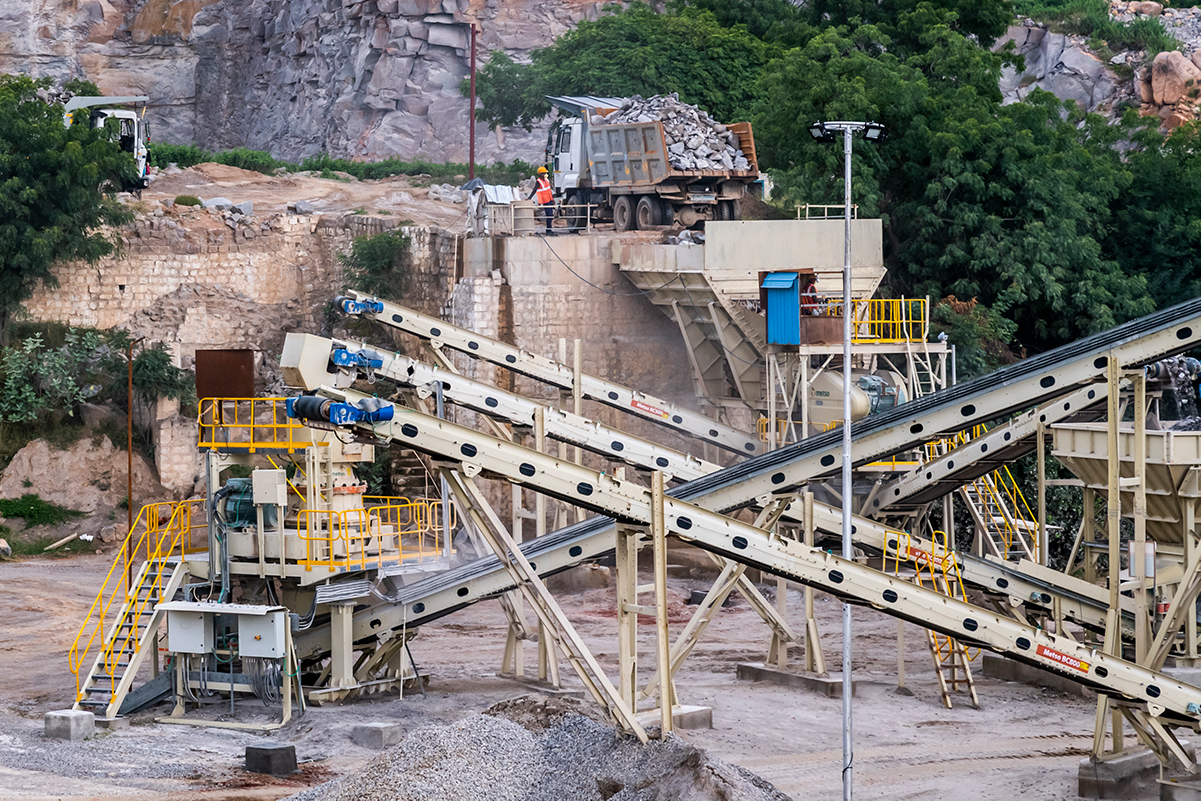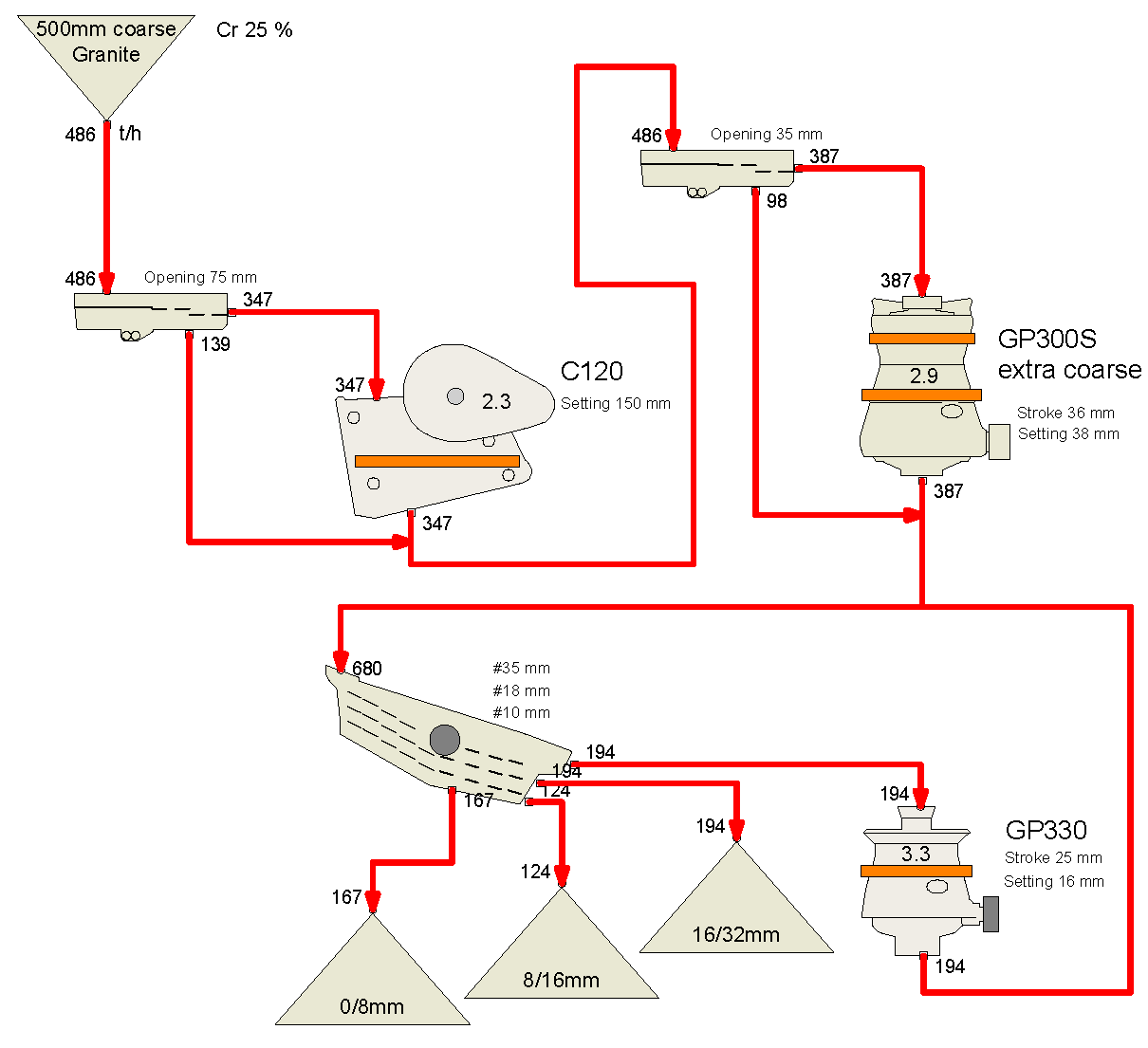Two of the most common crushing applications are two- and three-stage crushing processes. When deciding on whether to have two or three crushing stages, certain factors need to be considered in order to optimize the crushing process and achieve the best capacity and cost-efficiency. These are the
- type and size of the crushed rock;
- desired end-product size; and
- desired quality of the end product.
An optimal crushing process with the right number of crushers helps to avoid breakages, optimize the wear of parts and operate the crushers in their optimal operating range.
One of the key things is to fully understand and know your operation’s characteristics, as every quarry is unique. There are multiple different crushing processes and the way that they should be operated to achieve the optimal crushing process depends on many factors. This is one example of many applications and illustrates one potential case where this kind of crushing process could be optimal to produce the desired end product.
When and why to choose three crushers instead of two
Feed material characteristics impact on what kind of crusher should be used and what kind of settings are suitable for processing the feed material. For example, the size and type of feed material determines the achievable reduction ratio of the crusher.
For example, when producing 0/32 mm end product, two crushers may be enough to produce the desired end product cost-efficiently and in accordance with the quality requirements. However, when the desired size of the end product gets smaller, for example, 0/16 mm, two crushers may not be enough, and it might be worth considering adding a third crusher to the crushing process for optimal aggregates production.
But how to determine the number of crushers in practice? Here's a practical tip: Check the maximum feed size of the primary crusher and compare that to the desired final product size. As a guiding principle, a reduction ratio of 4 is generally considered as the maximum of any jaw or cone crusher. If the ratio of feed material and end product size is 16:1, you need 2 crushers, and this is calculated by multiplying 4 with 4. If the ratio would be, let’s say 20:1, you would need 3 crushers.
Some easily crushable rock types can be crushed in two stages and some harder rock types in turn require to be processed in three stages or more. If you attempt to process these types of rocks with crushers that are not optimal for processing them, the crushers will not be operated in their best operating range. This leads to increases in operative costs due to such things as higher wear of wear parts.
Improved end-product quality compensates equipment costs
One common counterargument for not investing in additional crushers is naturally to save money. However, that is a devious misconception as producing fine aggregate with only two crushers oftentimes has a negative effect on both final product quality and quantity/capacity. It is possible to meet the size range even without an optimized process, but in order to meet the customers’ quality requirements, the process needs to be designed and built to meet those as well.
The argument on costs can also be examined from the equipment use point of view. All crushers are built to perform optimally in certain conditions, and if they are run constantly in non-optimal conditions, there will be an inevitable increase in cost per ton of production. This includes excess wear, but it can also be seen as not getting the most out of the investment. Luckily, there is always the option of optimizing the process.
Less stress and wear on the primary crusher
So, if your target is to produce fine end products (for example, 0/16 mm) and aim for optimal crusher use and avoid breakages and rapid wear of wear parts, adding a third crusher as part of the crushing process would make production more optimal. Crushing in three stages enables the primary jaw crusher to be operated with a larger setting by accepting more and larger size feed material which in turn increases the life of wear parts and lowers operating costs as wear cost per crushed ton is higher. With three crushers, the settings can be also adjusted and fine-tuned more easily compared to two-stage crushing, which makes it easier to make finer end products.
Designing a crushing process for fine aggregate production
Here we are going to explain the benefits of three crushers in an example scenario producing 0/8, 8/16 and 16/32 end products (for example, 0).
Let’s start with the primary jaw crusher, the Nordberg C120. For a two-stage crushing plant with the feed material properties in this example, it is not possible to squeeze the CSS any tighter than 100 mm as the power limit is the limiting factor. In the three-stage plant, we can open the C120’s CSS to 150 mm, as the GP300S secondary cone crusher with its large feed opening can handle the coarser product of the jaw with ease, without any downtime caused by bridging or blockages.




